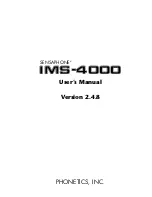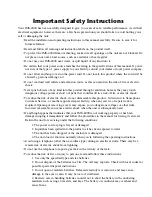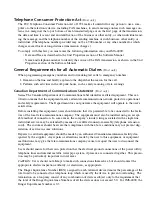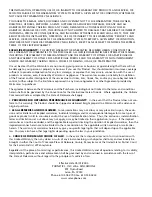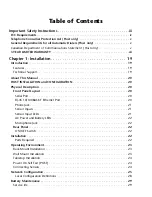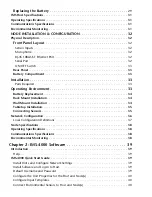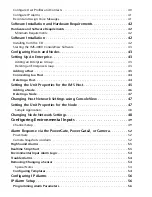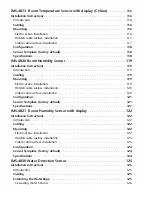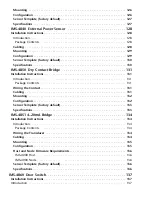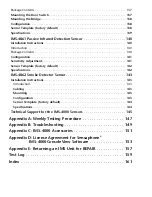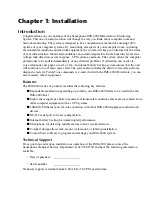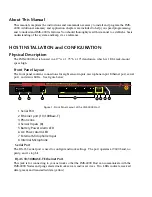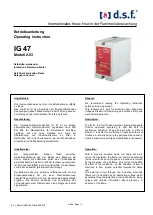
Telephone Consumer Protection Act
(Host only)
The FCC Telephone Consumer Protection Act of 1991 makes it unlawful for any person to use a com-
puter or other electronic device, including FAX machines, to send a message unless such message con-
tains, in a margin at the top or bottom of each transmitted page or on the first page of the transmission,
the date and time it is sent and an identification of the business or other entity, or other individual send-
ing the message, and the telephone number of the sending machine or such business, other entity, or
individual. (The telephone number provided may not be a 900 number or any other number for which
charges exceed local or long-distance transmission charges.)
To comply with this law, you must enter the following information into your IMS-4000:
• Date and Time as described in the Unit Properties section of the Software Manual.
• Name and telephone number to identify the source of the FAX transmission, as shown in the Unit
Properties section of the Software Manual.
General Requirements for all Automatic Dialers
(Host only)
When programming emergency numbers and (or) making test calls to emergency numbers:
1. Remain on the line and briefly explain to the dispatcher the reason for the call.
2. Perform such activities in the off-peak hours, such as early morning or late evenings.
Canadian Department of Communications Statement
(Host only)
Notice
: The Canadian Department of Communications label identifies certified equipment. This cer-
tification means that the equipment meets certain telecommunications network protective operational
and safety requirements. The Department does not guarantee the equipment will operate to the user’s
satisfaction.
Before installing this equipment, users should ensure that it is permissible to be connected to the facili-
ties of the local telecommunications company. The equipment must also be installed using an accept-
able method of connection. In some cases, the company’s inside wiring associated with a single line
individual service may be extended by means of a certified connector assembly (telephone extension
cord). The customer should be aware that compliance with the above conditions may not prevent deg-
radation of service in some situations.
Repairs to certified equipment should be made by an authorized Canadian maintenance facility des-
ignated by the supplier. Any repairs or alterations made by the user to this equipment, or equipment
malfunctions, may give the telecommunications company cause to request the user to disconnect the
equipment.
Users should ensure for their own protection that the electrical ground connections of the power utility,
telephone lines and internal metallic water pipe system, if present, are connected together. This precau-
tion may be particularly important in rural areas.
CAUTION
: Users should not attempt to make such connections themselves, but should contact the
appropriate electric inspection authority, or electrician, as appropriate.
The Ringer Equivalence Number (REN) assigned to each terminal device denotes the percentage of the
total load to be connected to a telephone loop which is used by the device to prevent overloading. The
termination on a loop may consist of any combination of devices subject only to the requirement that
the total of the Ringer Equivalence Numbers of all the devices does not exceed 5.0. For IMS-4000, the
Ringer Equivalence Number is 0.3.
v
Summary of Contents for Sensaphone IMS-4000
Page 1: ...IMS 4000 User s Manual Version 2 4 8 PHONETICS INC SENSAPHONE ...
Page 44: ......
Page 59: ......
Page 60: ......
Page 102: ......
Page 106: ...IMS 4000 Manual 106 ...
Page 135: ...Chapter 7 IMS 4000 Sensors 135 ...
Page 146: ...IMS 4000 Manual 146 ...
Page 148: ...IMS 4000 Manual 148 ...
Page 158: ...IMS 4000 Manual 158 ...
Page 159: ...159 ...

